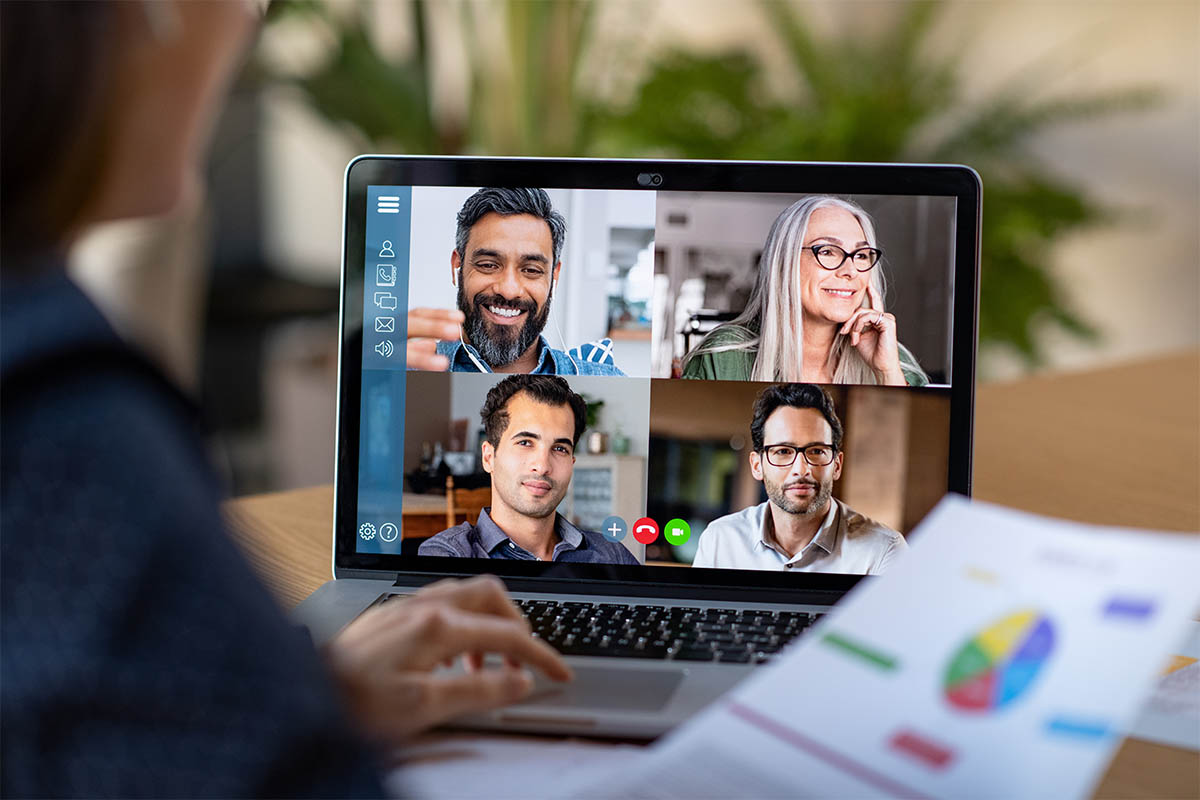COVID-19 is one of, if not the only, issues that makes news headline these days. The pandemic is not only bad for the lives of many, but also devastating for business. Projects are put on halt, layoff is in the air, and new deals fall through – simply because self-preservation through social distancing is the best method to put an end to this nightmare. Amid the negativity in these dark times, one particular service seems to find an opportunity to shine, capitalizing on the need to interact.
 JFK – Brandenburg
JFK – Brandenburg
Eleven hundred Euro and 21 hours – the least amount of money and time expended by a certain businessperson in New York to close a deal in Berlin. To break it down, those will get him a 10-hour flight from the John F Kennedy to the Brandenburg via Frankfurt, plus an 11-hour return flight.
It is, however, important to note that such endeavour can be concluded with relatively less sweat and close to no-cost. The one-click away solution.
Yes, the development of video conference technology has redefined business practice to a point that a multi-million-dollar handshake or a very specific corporate training can be executed from across the ocean.
As a matter of fact, the technology has become more and more pertinent amid the current global situation that strongly recommends social distancing. To put it mildly, there is no other time better than today to promote the use of video conference technology for business operations.
Will it last, though? Or is it just a one-off trend?
Will, at the end, a certain John or a certain Jane from the other side of Atlantic opt to revert to the classic approach of face-to-face interaction, instead of just riding the new business hype?
WFH, a blast from the past
The year was 1665 when a 24-year-old student from Trinity College in Cambridge, England, experienced the same form of nightmare as what we are experiencing now. It was evidently worse as hospitals and government did not operate the way they do these days. With little to none understanding of the plague, the authority decided that the best way was to enforce social distancing.
They had planned to flatten the curve, 355 years before it was trending on Twitter.
And so, the young student was forced to return home to his family manor at Lincolnshire, 74 miles away from the campus. It turned out to be a blessing in disguise, not only for the young scholar, but also for the entire world. In solitary and being excommunicated, he transformed into earth’s supreme scientist when he wrote the theory of universal gravitation.
Meet Sir Isaac Newton. The patron saint of Work-from-Home.
“If Isaac could do it without the internet, imagine what you can achieve using it?”
But most of us are not like Sir Isaac Newton, who thrives to succeed when nobody is watching. This is why video conference technology flourishes amid this global pandemic. To facilitate business and, perhaps more importantly, to ensure that everybody is doing what they are paid for.
Hence, video conference service provider is now the diva, with one provider, for example, experienced a staggering 20-fold user increase in a span of two weeks. To put things into perspective, Facebook reported that the company had a 9 percent annual increase of Daily Active User by the end of 2019 – totally belittled by the said company’s 2,000 percent achievement.
It is not always rainbows and butterflies, though. A few downsides have been highlighted.
Bruce Daisley, author of “The Joy of Work”, as quoted by The Guardians, provided a counter on video conference usage from the employee’s point-of-view. He claimed that people’s stress level tends to clock in higher when they work remotely. He claimed that psychologically, employees think that the around-the-clock monitoring exhibits low level of trust from their supervisor. Inevitably, their spirit is saturated and work result is, at best, not guaranteed.
Additionally, Bill Marczak from the Citizen Lab wrote a report that highlighted a threat in the end-to-end encryption from one major service provider. That, plus the fact that there were crypto and encryption keys sent to a certain party of interest, has rendered video conferencing questionable for all sensitive information delivery.
The new normal
“Resurgent waves of infection (that) could last into 2022,” The New York Times wrote.
This very line means a ton of things. Business-wise, companies are expected to adapt with the situation. HRGA-wise, there might be, at some point and to some extent, a need for efficiency. This also means, in the context of L&D, that a transition is required, and it is required yesterday.
Trainings need to shift from the normative practice to somewhat flexible mode, if not makeshift. No more seminars. No more face-to-face interaction. At least until the world gets better.
The problem is, when it does get better, what are the chances that L&D activities can resume like how it rolled before the pandemic? Corporate risk department will likely get anxious upon hearing any attempts to facilitate meetings that disregard their safety protocols. Needless to say, setting up internal and external trainings will be a difficult feat.
Hence, L&D department needs to start embracing the new normal.
First popularized by McKinsey and Company, the new normal depicts the (potential) changes occurring as a result of the pandemic. On operational department, for example, the new normal can mean a new SOP. Temperature check, daily health check-up, and face-mask utilization might be included in their new books of rule. Additionally, new KPI is absolute, to both cover the losses and adapt with the new situation.
As for L&D, three things are of bare essential, namely:
- Integration to virtual reality is a priority.
Relying on current technology will not be sufficient because it was not designed to be specifically utilized during and post-pandemic. On that note, tweaking video conference features to better adapt the virtual demand can greatly do a service to the delivery of L&D. Moreover, internalizing the technology is as important as relying to external service provider can pose a serious threat to data privacy.
- Training personnel skills need to be upgraded.
Other than the platform of delivery, training personnel needs to level up. They need to make a smooth transition from delivering the normative practice of classroom-type training to a more flexible webinar-type training. In other words, training personnel’s presentation skills need to tune in with distance-learning perks.
- Learning materials needs to be adjusted.
Finally, L&D content will no-longer be bound on paper-based handouts or face-to-face engagement. It needs to be distributable, but also private at the same time. In addition, L&D content needs to be personal, as the ability to grasp a subject differs from one person to another. It must be able to encourage the participants to actively learning by keeping them on their toes.
Alas, companies in general and L&D department in specific can only sustain this COVID-19 test by adjusting to a new normal. True – it is still too soon to conclude that a certain John or Jane would not take that flight across the Atlantic for business or training purpose. But on the contrary and hypothetically, once the technology and the resources manage to break the efficiency barrier, physical interaction will be a thing of the past. In this mix, the pandemic acts a catalyst that single-handedly speeds up the transition.
Once the barriers are overcome, the new normal might as well present the whole new world.
Image: © Rido – stock.adobe.com





